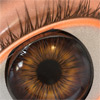- Mon Feb 27, 2006 10:12 pm
#123147
Here is a simple example of averaging 10 images with Gaussian noise (15% monochromatic) to get a single image. The original image is a simple grayscale image of concentric circles:

This is an example of noise applied:

And this is the arithmetic mean of 10 images averaged together.

FYI - the original, noise-free target image had noise added and the noisy image was saved. Repeat 10 times so you have 10 uniquely noisey images from fresh copies of the noise-free original (i.e., psuedo-random noise).
Here is the screen shot of the PS CS2 noise filter:

This demo is done on an 8bit gray image - 24 bit RGB gets more hairy for reasons of color shift, etc. that require more sophsticated reconstruction techniques, but you get the idea.
Averaging done in "pcomb" app of RADIANCE (http://www.radiance-online.org/), according to the input:
pcomb -e 'lo = (li(1)+li(2)+li(3)+li(4)+li(5)+li(6)+li(7)+li(8+li(9)+li(10))/10' pic1 pic2 pic3 pic4 pic5 pic6 pic7 pic8 pic9 pic10 > avg
where lo is the output brightness, li(n) is the input brightness for each image (n), picn is the image name for each of the 10 noisy images, and avg is the output image.
[/url]

This is an example of noise applied:

And this is the arithmetic mean of 10 images averaged together.

FYI - the original, noise-free target image had noise added and the noisy image was saved. Repeat 10 times so you have 10 uniquely noisey images from fresh copies of the noise-free original (i.e., psuedo-random noise).
Here is the screen shot of the PS CS2 noise filter:

This demo is done on an 8bit gray image - 24 bit RGB gets more hairy for reasons of color shift, etc. that require more sophsticated reconstruction techniques, but you get the idea.
Averaging done in "pcomb" app of RADIANCE (http://www.radiance-online.org/), according to the input:
pcomb -e 'lo = (li(1)+li(2)+li(3)+li(4)+li(5)+li(6)+li(7)+li(8+li(9)+li(10))/10' pic1 pic2 pic3 pic4 pic5 pic6 pic7 pic8 pic9 pic10 > avg
where lo is the output brightness, li(n) is the input brightness for each image (n), picn is the image name for each of the 10 noisy images, and avg is the output image.
[/url]
Last edited by kirkt on Mon Feb 27, 2006 10:32 pm, edited 1 time in total.









 - By Andreas Hopf
- By Andreas Hopf